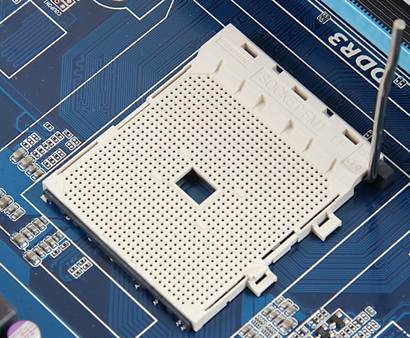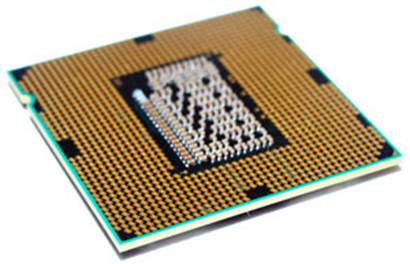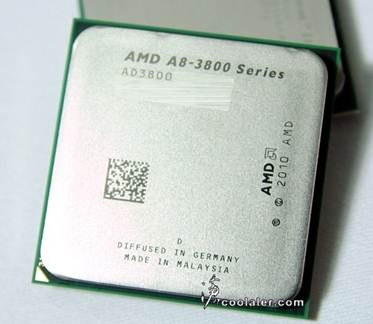Ian Jackson looks at how to pick the right
parts for your PC build
Picking the perfect processor
The CPU beats at the heart of all PC
systems. It’s usually the first component listed in a pre-built system’s spec,
and it’s a very important performance-determining component. CPUs range in
price from under $60 to well over $1,050 depending on capability and
complexity, but rather than simply buying the fastest clock speed you can
afford, there are several questions you should ask yourself when picking your
perfect processor.
Socket FM1
One of the first choices you need to make
is whether to opt for an AMD or for an Intel product. These two old foes have
battled for CPU supremacy for many years, with both companies holding a
significant advantage at different times in history. In recent times, however,
it has been Intel that has had the absolute performance advantage, leaving AMD
to battle with its entry level and mid-ranged products while it keeps the lucrative
high-end market all to itself.
If you’re looking to build as cheap a
system as you possibly can, it’s easy to fall into the trap of buying into
technology that has already become obsolete. Some seemingly great deals may
exist for Socket AM2 products, but as these platforms have no upgrade path,
you’re buying into a system that has no future expandability. For this reason,
we therefore recommend that those looking to make a new budget box focus their
searches on Socket FM1 products if looking for an AMD system, or a Socket 1155
processor of preferring to go down the Intel route.

Socket 1155 processor
AMD’s entry-level chips are the A4 series
and come in two speeds: the 3300 and the 3400. These are clocked at 2.5GHz and
2.7GHz respectively and feature a dual-core architecture. The two chips are
seemingly separated by less than $15, and can be picked up for less than $75 a
pop. For a similar price you can instead go for an entry-level AMD A6 series
processor: the 3500. This is a triple-cored architecture, but it has a
significantly lower clock speed at 2.1GHz. Which is the better choice depends
on how you use your PC. If you do a fair amount of multitasking or regularly
use software that is multi-threaded in nature (video encoding and photo editing
are two examples), the triple-core will generally be faster. For general
computing, however, the higher clock speed will feel more responsive.
For a similar price to these entry-level
AMD options, Intel will sell you its Pentium G series of Socket 1155 processors.
In a nutshell, the Intel chips are quite a bit faster in single-threaded
CPU-bottlenecked tasks, but the integrated GPU is roughly half as quick. For a
box where the primary use for the Intel architecture is therefore a good
choice. If your plans are more multimedia-heavy and you want greater
flexibility when it comes to playback options for video, or if your intended
tasks include some casual gaming, the AMD Llano options certainly hold an
advantage.
If we raise our budget a little, things get
quite a bit more interesting. AMD offers its A6 3670 chip for around the $150
mark, while Intel offers its entry-level Core i3 product, the 2300, for a few
pounds more. AMD’s flagship FM1 chip, the A8, also hovers close to this price
and can be snapped up for around the $165 mark. At these prices, AMD is
fighting Intel’s inherently greater efficiency with double the cores. In
performance, therefore, we see two contrasting trends. In traditional
workloads, the Intel chips hold a significant advantage, with their higher
clock speed and higher ‘instructions-per-clock’ resulting in almost double the
performance. In workloads where the AMD platform can flex the muscle of its
multi-cored design, things are much more competitive. Regardless of how you
look at it, the sad news for AMD fans is that even the A8 cannot keep up with
the Core i3 in general purpose CPU-limited workloads, let alone the A6.

ADM A8 – 3800 Series
AMD argues that the raw CPU performance
plays a less relevant role in overall system speed than it once did. Multimedia
playback and video creation is now a major reason for consumers wanting to
upgrade their processors, and it is here that the Llano excels. In video
encoding, for example, the extra cores of the Llano mean it is quite
competitive with the i3, whereas for casual gaming the A6 and the A8 totally
destroy the Intel competition. Measuring raw GPU performance using a synthetic
benchmark like 3DMark Vantage shows the AMD chips to be at least three times
faster, demonstrating playability at settings the i3 chips can only dream of.
Once again, for office workloads the Intel is a clearly better choice here,
whereas for the home user who needs to mix a little play in with their work,
the AMD Llanos may end up providing a better balance.
At a price $225, we have the socket AM3+,
eight-cored AMD FX processors, better known by their ‘Bulldozer’ code-name, and
the Intel Core i5 series. $225 wont quite buy you an unlocked Core i5 2500K,
but it will buy you an i5 2400 – a 3.1GHz quad-core part. Once again, AMD is
fighting Intel’s greater per-core efficiency wit more cores, but as most
applications fail to address four cores effectively, let alone eight, it’s a
game of diminishing returns. Most applications simply can’t take advantage of
that level of multi-threading, leaving the Bulldozer’s performance lagging well
behind its nemesis. Quite simply, unless you’re constantly hammering your PC
with content creation or video transcoding, you’ll want an Intel chip in your
system at this price.
At prices above $225, Intel pretty much has
the whole market to itself. The i5 2500K has been called ‘the only chip that
matters’ by many an enthusiast, courtesy of its proximity in performance to the
much more expensive Core i7, and its fully unlocked multipliers. Arm yourself with
a good cooler and a decent motherboard and these chips will happily reward you
with more than 1GHz of extra performance.

Intel Core i5
For those with the deepest pockets, Intel
now offers a six-cored version of the Sandy Bridge. These chips have their own
special socket (Socket 2011) and cost the best part of $750 each. Unless you
work in an industry where CPU performance really does make a difference to your
bottom line (rendering and transcoding spring to mind), these chips are going
to be overkill. Once again, the number of applications actually able to take
advantage of their extra two cores are very thin on the ground.